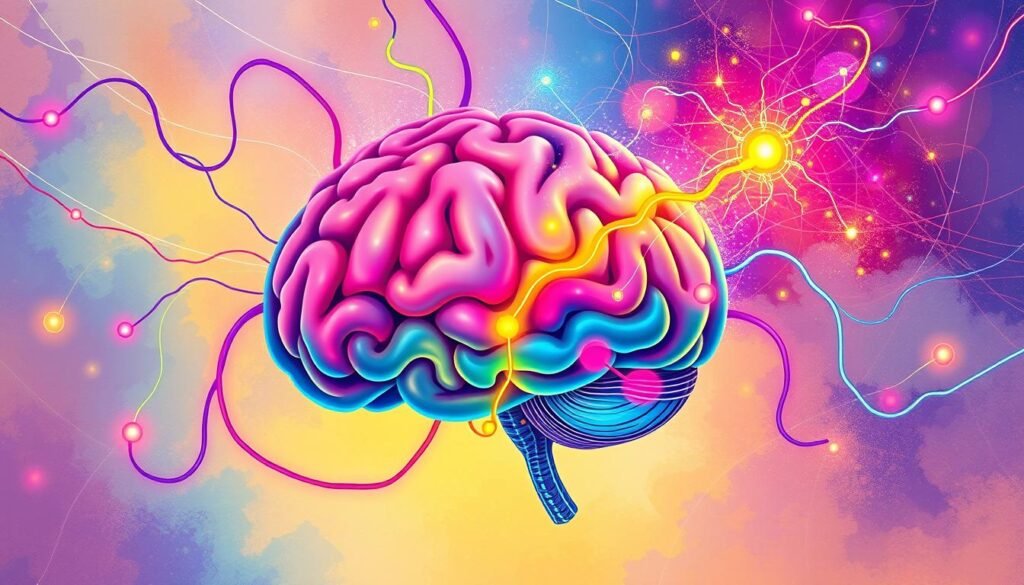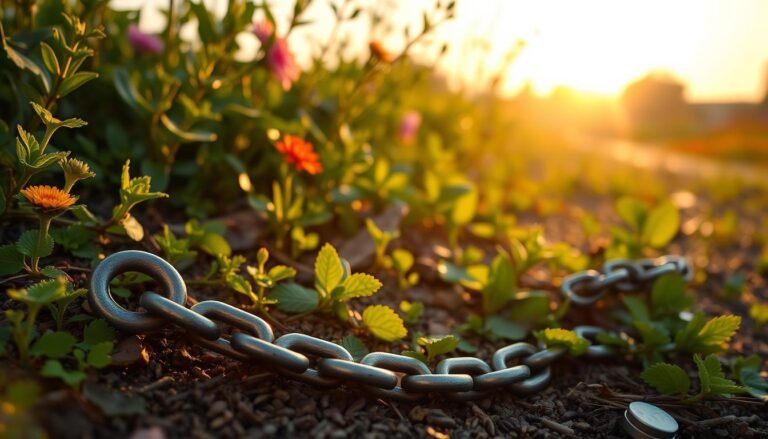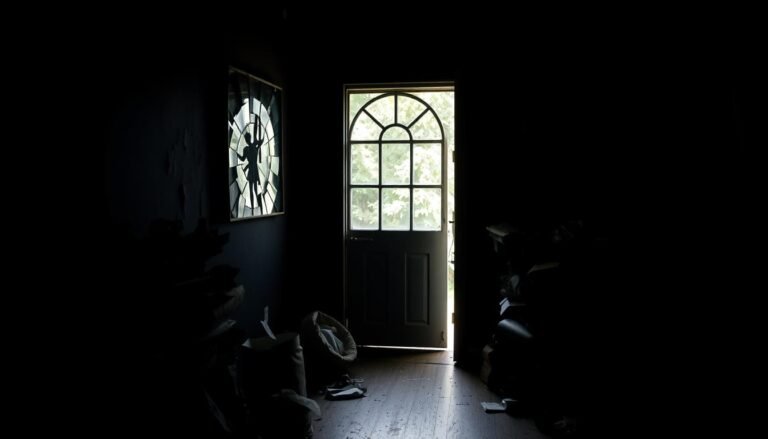Break Free from Bad Habits: A Fresh Start
Habits shape our daily lives, whether they’re good or bad. Breaking free from harmful habits is tough. But, research shows you can change your brain and swap bad habits for better ones. The trick is to use a clear, personal plan.
This article will show you how to overcome bad habits and start a lasting change. You’ll learn about the science behind habits, find your triggers, and replace bad habits with good ones. This way, you can control your life and get the future you want.
If you’re fighting addiction, breaking a bad pattern, or want to be more productive, this article is for you. It will give you the tools and steps to reach your goals. Start this new chapter and free yourself from bad habits. This will lead to a healthier, happier, and more rewarding life.
Understanding the Biology of Habits
Habits are deeply rooted in the brain’s reward centers and the neurotransmitter dopamine. When we engage in a behavior that triggers dopamine release, our brain learns to crave it. This makes it hard to break the habit, especially for pleasure-based ones like smoking or overeating.
Habits and the Brain’s Reward Centers
Research shows that habits form in the frontal lobe and basal ganglia of the brain. These areas are active when we learn a new habit. Once learned, the brain can keep doing the behavior even without the reward.
Pleasure-Based Habits and the Role of Dopamine
Dopamine is key in habit formation. When we get a reward, dopamine levels go up, making us want to do it again. Over time, the dopamine release moves to the cue or action, making the habit harder to break.
| Statistic | Insight |
|---|---|
| Lab research shows that mindfulness training for smoking and emotional eating led to 5 times higher smoking quit rates compared to the gold standard treatment. | Mindfulness can be an effective tool in breaking pleasure-based habits by helping individuals regulate their brain’s reward centers. |
| Mindfulness training also resulted in a 40% reduction in craving-related eating behaviors. | Mindfulness can help individuals better manage cravings and disrupt the habit loop associated with pleasure-based behaviors. |
| In a recent randomized controlled trial, smokers were able to regulate their default mode network, leading to decreased smoking. | The brain’s default mode network, which is associated with habit formation, can be controlled through mindfulness, helping individuals overcome addictive behaviors. |
Understanding the neuroscience behind habits helps us find better ways to break them. We can then create new, healthier habits.
Why Bad Habits are Hard to Break
Breaking bad habits is tough. It’s because of how repetition and brain plasticity work together. When we keep doing a habit, the brain’s pathways for that action get stronger. This makes it harder to stop.
The Power of Repetition and Brain Rewiring
Our brains can change and adapt, a process called neuroplasticity. Every time we do a habit, the brain’s connections get stronger. This is why habits like smoking or procrastinating feel so hard to break.
The brain also likes to reward us for habits. When we do a habit, it releases dopamine, making us feel good. This pleasure-based reinforcement makes us want to do it again, making the habit stronger.

To beat the habit breaking challenges, we need a smart plan. Knowing how habits start and stick is key to breaking them.
Strategies for breaking free from bad habits
Breaking free from bad habits is tough, but it’s doable with the right approach. Focus on two main steps: find out what triggers your bad habits and replace them with good ones.
Identifying Cues and Disrupting Routines
First, know what starts your bad habits. These can be things around you, people you’re with, or how you feel. Once you know these cues, you can change your habits by removing temptations or changing your surroundings.
- Spot the cues that lead to your bad habits, like a certain time or place.
- Change your environment to avoid these cues, like not having junk food at work.
- Make it harder to do the bad habit by adding obstacles, like deleting apps.
Replacing Bad Habits with Positive Behaviors
After you’ve broken the cycle, replace the bad habit with a good one. This could be starting a new, healthy habit or finding a better way to meet your needs.
- Find a good habit to replace the bad one, like walking instead of smoking.
- Start small and build up to making this new habit a regular part of your life.
- Be proud of your progress and don’t get discouraged if it takes time.
Using these strategies can help you overcome bad habits and live a better life. It’s not easy, but with effort and dedication, you can change for the better.
The Importance of Self-Awareness and Mindfulness
To break free from bad habits, you need to understand yourself deeply. Paying attention to your thoughts, feelings, and body helps you see what drives your bad habits. Mindfulness lets you pause and choose wisely, instead of acting without thinking.
Studies reveal that 95% of habits become automatic from frequent repetition. The habit loop, with a trigger, behavior, and reward, shapes these habits. Mindfulness helps break this cycle by changing the brain’s learned patterns.
“Mindfulness can be applied to eating habits, helping individuals become more aware of their diet and food relationships.”
Knowing yourself and having a habit change mindset is key. Understanding the different types of habits helps you tackle your specific challenges.
There are many resources to help you on your path to self-awareness and mindfulness. You can find guided meditations and expert sessions to support your journey. These tools can help you overcome bad habits and live more mindfully.

Harnessing the Power of Willpower and Self-Control
Building strong willpower and self-control is key to breaking bad habits and lasting change. Studies show these skills can grow with practice. Regularly using self-control in your life boosts your ability to regulate yourself.
When tempted by a bad habit, strong willpower helps you resist. Learning how to save and restore your self-control can help you beat tough habits.
Self-Control as a “Muscle”
Self-control can get stronger with effort and practice, just like muscles. It takes about 66 days to form a new habit, and you might need to “unlearn” some bad ones too. Start with small goals and slowly increase the challenge to build your willpower.
- Try the “10-minute rule” to fight bad habits. Wait 10 minutes before acting on an urge.
- Set clear, achievable goals to boost your self-control, like meditating for 5 minutes daily or taking a short walk at lunch.
- Use mindfulness to better understand your thoughts and urges, helping you control yourself better.
- Share your habit change motivation goals with friends and family to stay on track and motivated.
Regularly working on your willpower will help you conquer even the toughest bad habits. Remember, change takes time, so be patient and celebrate your small victories.
Personalizing Your Approach for breaking free from bad habits
Breaking free from bad habits is tough because our brains love what’s familiar and hate change. But, with a plan that fits you, you can beat bad habits. This way, you can make real changes.
Developing Strategies and Avoiding Triggers
The first step is to find out what triggers your bad habits. These can be things, places, or feelings that make you want to do something you shouldn’t. Once you know what triggers you, you can make a plan to avoid or handle them.
- Removing access to temptations or triggers, such as keeping unhealthy snacks out of sight.
- Substituting your bad habit with a positive alternative that meets the same need, like going for a walk instead of reaching for a cigarette.
- Practicing mindfulness and self-awareness to recognize triggers as they arise and consciously choose a different response.
By focusing on your own challenges, you’ll get better at personalized habit change, habit avoidance, and trigger management.
“The secret of change is to focus all of your energy, not on fighting the old, but on building the new.” – Socrates
Remember, changing bad habits is a long journey. You’ll face ups and downs. But, stay patient, kind, and keep trying. Keep making your strategies better to fit your life.
The Role of Visualization and Mental Practice
Breaking free from bad habits is tough, but visualization and mental practice can help. By imagining yourself doing the right thing, you build new habits in your mind. This makes it easier to act on your plans when you face temptation.
Visualization is like training for athletes. It helps them prepare and stay focused. Olympic athletes like Michael Phelps use it to win. They see themselves succeeding in their minds.
Visualization works by making your brain think it’s really happening. It helps athletes feel less anxious and more confident. This is key for success.
Mental rehearsal is another way to prepare for challenges. It boosts your confidence and reduces anxiety. Just a few minutes a day can make a big difference.
But, visualization alone isn’t enough. You need to take action too. Tools like vision boards and affirmations can help. They give you positive reminders and steps to follow.
Consistency is the secret to changing habits. With regular practice, you can overcome bad habits. This leads to a healthier, happier life.
Seeking Support and Celebrating Progress
Breaking free from bad habits is tough, but you’re not alone. A strong network of social support can help a lot. Friends, family, or a coach can offer the motivation and accountability you need.
As you start to break bad habits, it’s key to celebrate your progress. Even small wins are important. They help you stay motivated and keep growing.
| Habit Change Strategy | Potential Benefits |
|---|---|
| Seeking Social Support |
|
| Celebrating Progress |
|
“Habit is habit, and not to be flung out of the window by any man, but coaxed down-stairs one step at a time.” – Mark Twain
Using social support and progress celebration makes breaking bad habits easier. Every small step is a victory. Keep moving forward on your journey of habit change and personal growth.
breaking free from bad habits: A Lifelong Journey
Habit change is not a one-time event; it’s a lifelong journey filled with both progress and setbacks. Embracing this reality is crucial for achieving long-term success. Recognize that slip-ups and relapses are a normal part of the process, and use them as opportunities to refine your strategies.
Embracing Setbacks and Perseverance
Rather than berating yourself for falling back into old habits, approach these moments with self-compassion. Setbacks are not failures; they are learning experiences that can help you become stronger and more resilient. Persist through the challenges, and remember that habit change is not a linear path but a winding road.
Developing a growth mindset is key to overcoming obstacles. Believe in your ability to adapt and improve, and don’t let temporary setbacks deter you from your long-term goals. Persistence and resilience are essential qualities for breaking free from bad habits and creating lasting change.
“The greatest glory in living lies not in never falling, but in rising every time we fall.” – Nelson Mandela
Embrace the journey of habit change, and celebrate your progress, no matter how small. Each step forward, even if followed by a step back, brings you closer to the person you want to become. With a positive attitude and a commitment to learning and growth, you can overcome setbacks and achieve sustainable habit change.
Exploring Pharmacological and Genetic Factors
Behavioral and psychological methods are key to breaking bad habits. But, pharmacological and genetic factors also matter. Some medicines can change the brain’s habit-making pathways. Also, some people might be more prone to certain habits because of their genes.
Knowing about these factors helps in making a better plan to change habits. It lets people tailor their strategies to fit their unique needs.
Medication-Assisted Habit Change
Medicines can help fight bad habits, especially addiction. Habit change and medication can work together. They target the brain’s reward centers, helping to break the cycle of cravings.
For example, naltrexone and acamprosate can help reduce the urge to use alcohol or opioids. This makes long-term recovery more possible.
Genetic Predisposition to Habit Formation
New research shows that genetic predisposition can affect how easily we form habits. Some genes are linked to a higher risk of addiction. This shows that neurological factors play a big role in habit formation.
By understanding these genetic factors, people can make their habit-breaking plans more effective. This helps address their unique biological challenges.
Recent studies are also looking into how substance use, brain changes, and genetics affect teens. They aim to understand the complex relationship between biology, environment, and habits. This will help create more effective ways to intervene.
“Addiction tends to run in families, and certain stretches of DNA have been linked to different forms of addiction.”
Using insights from pharmacology and genetics can lead to a more complete approach to changing habits. It empowers people to overcome bad habits and build lasting, positive routines.
Building New Habits and Routines
Breaking free from bad habits means focusing on new, positive ones. This could be regular exercise, eating well, or practicing mindfulness. Creating a schedule that supports these habits helps them become second nature.
Studies say habits make up about 40% of our daily actions, thanks to Duke University researchers. Small daily improvements can lead to big changes. For instance, starting with 10 minutes of meditation and increasing to 20 minutes can build a lasting habit.
It’s more important to be consistent than perfect when starting new habits. Missing a habit once doesn’t hurt your long-term success. Stay patient, keep a steady pace, and let new habits feel easy at first for the best results.







